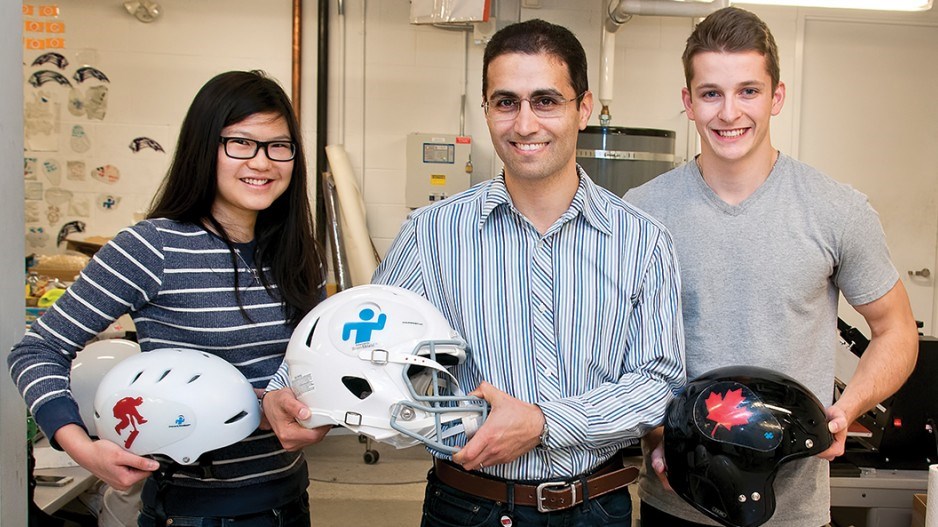A deep understanding of concussions, which are among the most controversial and mysterious of injuries, has eluded doctors despite intensive research into the causes and effects of brain injuries.
But while medical science has yet to fully comprehend all the complexities in concussions, researchers do know quite a bit about how certain factors in an accident can determine whether an injury is treatable – or serious and irreversible.
Armed with that knowledge, researchers at Simon Fraser University’s (SFU) School of Mechatronic Systems Engineering (MSE) in Surrey spent six years developing a product they say can reduce one of the major factors believed to cause concussions and head injuries. Daniel Abram, a post-doctoral fellow at the MSE lab, has created BrainShield, a thin decal that is placed on the outer shell of a helmet. Abram, who is chief technology and operating officer of BrainShield’s maker, SFU spinoff Shield-X Technology Inc., said the product helps to reduce friction on the helmet when it hits a surface. The goal is to prevent rotation of the head during an accident.
“In a collision situation, safety helmets nearly always contact the ground or other object barriers at an angle, causing both compression and swift rotation of the head,” said Abram, who also co-founded the Head Injury Prevention Lab at SFU’s Surrey campus. “While research studies show that the brain tissues are considerably more sensitive to rotation than compression, the majority of helmets are only designed to protect the head against compression of the brain.”
Now Abram is taking his product to market, and the results are starting to roll in. In a 2014 study, the decal was put on the helmets of SFU’s football players, and the number of reported concussion cases dropped from 14 to four the following season.
Abram has now expanded BrainShield, which can be customized for various types of helmets, to two B.C. high school football teams: Handsworth in North Vancouver and Vernon Secondary School. Jay Prepchuk, head coach for the Handsworth team, said he’s noticed a difference already.
“Safety is our No. 1 concern always when coaching football,” said Prepchuk. “And we decided that we were going to go ahead and use this product because we want to cut down on injuries and concussions. This year we’ve used the product and haven’t had any concussions, so we’ve been quite fortunate to be in that situation.”
Prepchuk stressed that the use of BrainShield on his players’ helmets doesn’t absolve them of the responsibility of playing the game safely.
“Right from Day 1 when these kids start playing football at Handsworth, they have been taught the right way to tackle and hit properly. And I think the kids are so well trained that in the heat of the battle I don’t think they react by saying, ‘I have this special shield or decal on my helmet so I can go ram my head into this guy.’ They wouldn’t be lasting too long on our team if they had that attitude.”
Abram said the product is “kind of like a seatbelt for your brain.”
“People can’t go 150 mph into a wall and think they’re going to be safe; you need to follow the rules. You need to do your best at preventing the injury. It’s like an airbag for your car. You’re hoping you’ll never have to use it, but it’s there for you for any kind of unexpected situation that you couldn’t handle any other way.”
Abram added it has been challenging initially to get people to take the product seriously, given that there are a lot of products for sale that claim to prevent concussions with little evidence to back up that claim. He said he hopes the research done at SFU will help give BrainShield further clout as Shield-X continues to test the marketplace.
“As we expected, many people at first glance were skeptical, as BrainShield is almost as thick as a conventional decal,” he said. “To show them the difference, we explained the science behind it in a simple language, and we showed them the high-speed video comparison between two helmets, impact the same way with and without BrainShield. The video said it all.”




